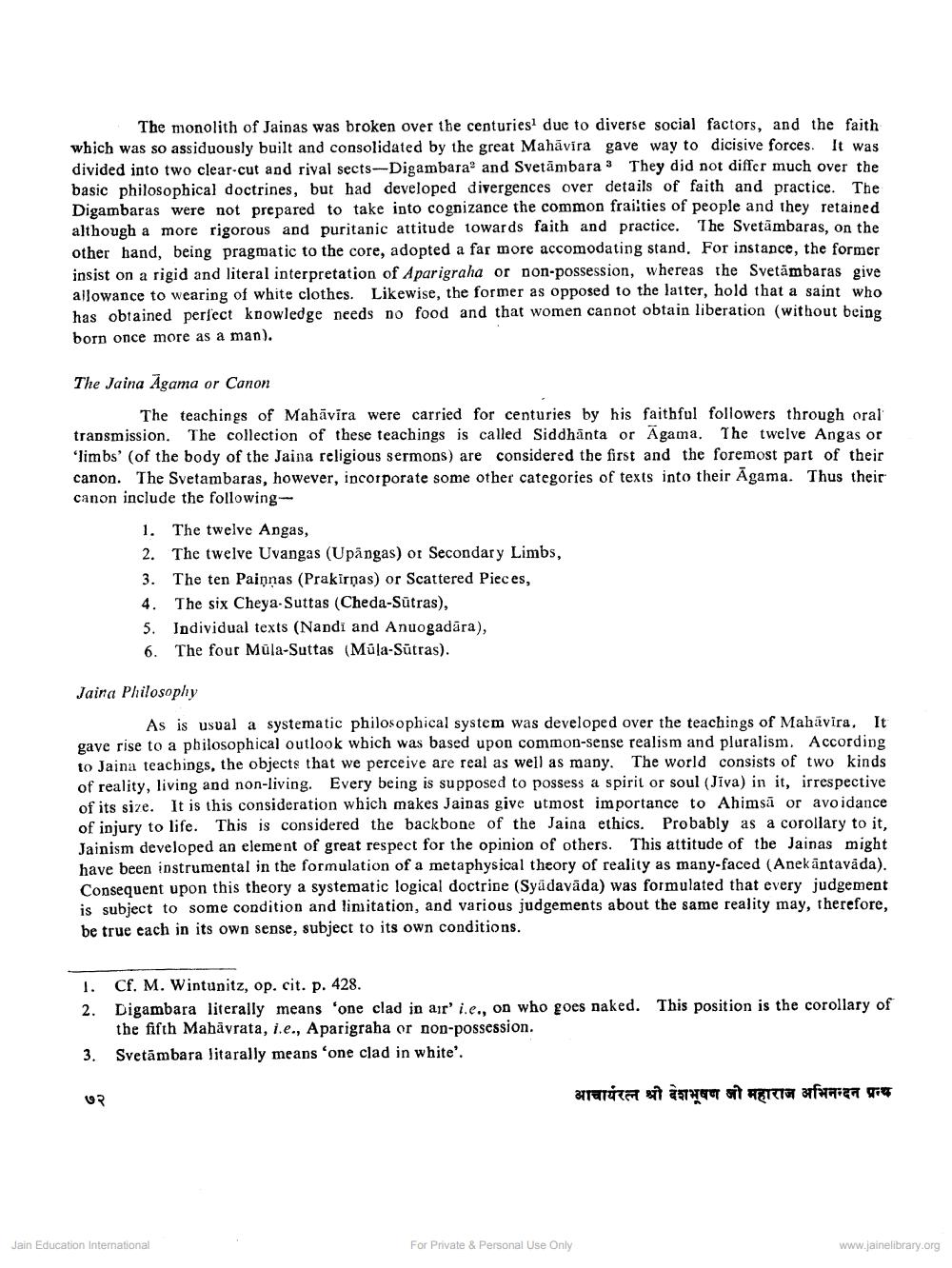________________ The monolith of Jainas was broken over the centuries due to diverse social factors, and the faith which was so assiduously built and consolidated by the great Mahavira gave way to dicisive forces. It was divided into two clear-cut and rival sects--Digambaraand Svetambara 3 They did not differ much over the basic philosophical doctrines, but had developed divergences over details of faith and practice. The Digambaras were not prepared to take into cognizance the common frailties of people and they retained although a more rigorous and puritanic attitude towards faith and practice. The Svetambaras, on the other hand, being pragmatic to the core, adopted a far more accomodating stand. For instance, the former insist on a rigid and literal interpretation of Aparigraha or non-possession, whereas the Svetambaras give allowance to wearing of white clothes. Likewise, the former as opposed to the latter, hold that a saint who has obtained perfect kpowledge needs no food and that women cannot obtain liberation (without being born once more as a man). The Jaina Agama or Canon The teachings of Mahavira were carried for centuries by his faithful followers through oral transmission. The collection of these teachings is called Siddhanta or Agama. The twelve Angas or 'limbs' (of the body of the Jaina religious sermons) are considered the first and the foremost part of their canon. The Svetambaras, however, incorporate some other categories of texts into their Agama. Thus their canon include the following 1. The twelve Angas, 2. The twelve Uvangas (Upangas) or Secondary Limbs, 3. The ten Painnas (Prakirnas) or Scattered Pieces, 4. The six Cheya-Suttas (Cheda-Sutras), 5. Individual texts (Nandi and Anuogadara), 6. The four Mula-Suttas (Mula-Sutras). Jaina Philosophy As is usual a systematic philosophical system was developed over the teachings of Mahavira, It gave rise to a philosophical outlook which was based upon common-sense realism and pluralism. According to Jaina teachings, the objects that we perceive are real as well as many. The world consists of two kinds of reality, living and non-living. Every being is supposed to possess a spirit or soul (Jiva) in it, irrespective of its size. It is this consideration which makes Jainas give utmost importance to Ahimsa or avoidance of injury to life. This is considered the backbone of the Jaina ethics. Probably as a corollary to it, Jainism developed an element of great respect for the opinion of others. This attitude of tbe Jainas might have been instrumental in the formulation of a metaphysical theory of reality as many-faced (Anekantavada). Consequent upon this theory a systematic logical doctrine (Syadavada) was formulated that every judgement is subject to some condition and limitation, and various judgements about the same reality may, therefore, be true each in its own sense, subject to its own conditions. 1. 2. This position is the corollary of Cf. M. Wintunitz, op. cit. p. 428. Digambara literally means 'one clad in ajr' i.e., on who goes naked. the fifth Mahavrata, i.e., Aparigraha or non-possession. Svetambara litarally means 'one clad in white'. the fifol 3. आचार्यरत्न श्री देशभूषण जी महाराज अभिनन्दन अन्य Jain Education International For Private & Personal Use Only www.jainelibrary.org




